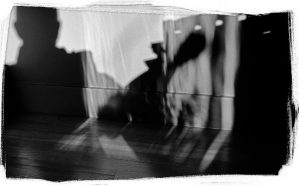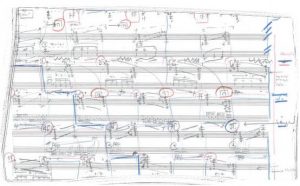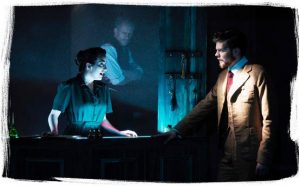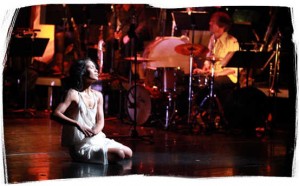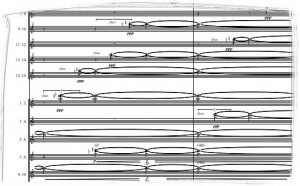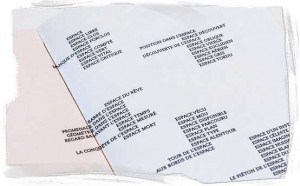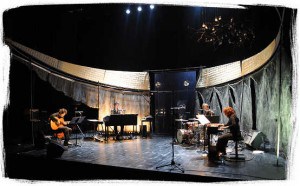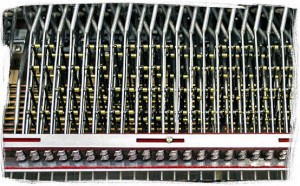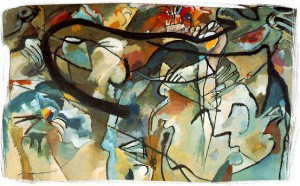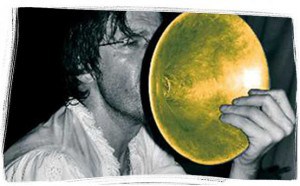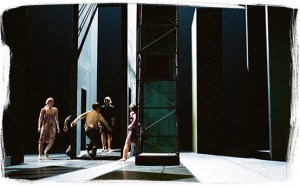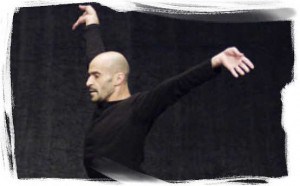electronic music design, klangregie
Home » electronic music design, klangregie
the computer music designer, or more generally “electronic music designer”, is a musician and sound engineer specialized in conceiving, producing and performing electronic music or the live electronics part of a music piece, dance, theater or sound installation project. the electronic music elements usually consists partly in pre-recorded elements that are spatialized (“projected”) live during the performance, partly in synthesized sounds produced by electronic music instruments which are live performed, and partly in real-time processing of live (acoustic and electronic) sounds.
for repertoire pieces, the computer music designer relies among others upon the score from the very beginning of the conception of the concert. during the performance in the hall, she or he executes the notated instructions as the other musicians.
for new music pieces, the computer music designer often starts working on the project in close cooperation with the composer long before the first performance, and thus not only on the technical conception of a project, but also on the formal, musical and sonic conception and development of the electronic music instruments that will be used during the performance.
about the term “computer music designer”
the term “computer music designer” (based on the french term “réalisateur en informatique musicale”) has been suggested by ircam in 2005 and is currently often used in many countries (1). it is precise but somehow limiting, since it focusses on the technical tool and, on top of that, on only one of the many analog and digital tools that are used (the computer). as far as technique is concerned, the computer music designer has to consider the whole electroacoustic chain (from the microphone/sensor until the loudspeaker): connecting a microphone or a sensor to an amplifier, even without any further dedicated processing, already forms an electroacoustic music instrument, which many musical works of all genres deliberately used.
analog and digital tools
it’s also worth noting that many computed-based and more generally digital audio processing techniques (for instance filters, distortions, delays, amplitude and frequency modulations…) are directly inspired by pure analog techniques, regardless of the software which is used (as for instance max/msp, pure data, reaktor, as well as all digital audio workstations – daw). this of course should not overshadow the peculiarities of the computer and the many unique possibilities it opens up, but this should encourage to consider all elements, both analog and digital, of the electroacoustic chain, as a whole.
electronic and acoustic perspective
on top of that, the conception of the electroacoustic part of the project of course imperatively requires to address it from acoustical (acoustic production of sounds and their propagation in the hall) and perceptual perspectives as well in order for instance to correctly select, dimension and position the sensors, microphones and electroacoustic sources with the aim of being as close as possible to the perceptual goal.
in this regard, the german term “klangregie” or “klangregisseur” (historically one of the first one being used, and for instance popularized by luigi nono and karlheinz stockhausen), which has admittedly the opposite drawback of being too general (“klangregie” means simply “sound direction” or “sound production”), is more adapted. It mostly refers however to a very last part of the production, i.e. the performance and/or diffusion (“sound projection”) of the electronics during the concert.
(1) some other terms, like “sound director”, “musical assistant”, “electronic musician”, have been employed to designate this function.
selected projects
contemporary music, electronic music design, klangregie
die judith von shimoda - opera in two parts, music by fabián panisello, neue oper wien, conception and design live electronics alexis baskind
music, contemporary music, electronic music design, klangregie, record production, research
a forest of pipes: the goal of this project is to metaphorically set the listener within wu wei's 37-pipe sheng, surrounded by its pipes.
contemporary music, electronic music design, klangregie
rebecca saunders - "the mouth" for soprano singer and electronics (2020). computer music design alexis baskind. first performance in september 2020
contemporary music, electronic music design, klangregie
les rois mages: music theater piece by fabián panisello for mezzosoprano, ensemble and electronics. electronics alexis baskind and monica gil gilardo.
contemporary music, electronic music design, klangregie
im keller: music by turgut erçetin for six voices and live electronics. premiere by the neue vocalsolisten stuttgart. electronics alexis baskind.
electronic music design, klangregie, contemporary music
kaleidoscopic memories, by beat furrer for double bass and electronics. first performance by uli fussenegger. electronics alexis baskind.
contemporary music, electronic music design, klangregie
le malentendu: opera by fabian panisello based on albert camus' piece for four singers, one actor, electronics and chamber orchestra. electronics alexis baskind.
jazz / improvised music, electronic music design, klangregie
l'enfant et les sortilèges by maurice ravel and colette, version for choir, singers, harp, accordion, woodwinds, ondes martenot, percussions and electronics
contemporary music, electronic music design, klangregie
redshift: music piece for symphonic orchestra and electronics composed by vladimir tarnopolski, electronic music production alexis baskind, production cirm
contemporary music, electronic music design, klangregie
espèces d'espaces: for 11 musicians, 1 singer, 1 actor, based on the book by georges perec, composition philippe hurel, computer music design alexis baskind
electronic music design, klangregie, jazz / improvised music
electronic mamies: live music project by denis charolles (musiques à ouïr). scenic design thierry grand. computer music design by alexis baskind
contemporary music, electronic music design, klangregie
plein-jeu, for accordion and electronics, composed by philippe hurel, performed by pascal contet. electronics by alexis baskind.
contemporary music, electronic music design, klangregie
fang man - deluge, resurrection: performed by the american composers orchestra and the los angeles philharmonic. electronics alexis baskind
contemporary music, electronic music design, klangregie
Événement sans titre ii: performance about john cage, performed by the ixtla percussion quartet, computer music designer alexis baskind
electronic music design, klangregie, jazz / improvised music
solo pas solo: live performance by denis charolles (drums, percussions, watering can, pebbles, trombone, guitar,...), computer music design alexis baskind
electronic music design, klangregie, jazz / improvised music
oratorio de copernic & co: sound poetry performance by henri chopin. soundscaping frédéric acquaviva. computer music design vincent rioux et alexis baskind
contemporary music, electronic music design, klangregie
les arpenteurs: performance by michèle noiret and françois paris, perfomed by the percussions de strasbourg, computer music design alexis baskind
contemporary music, electronic music design, klangregie
apocalypsis: piece for 4 singers and orchestra composed by philippe leroux, computer music design alexis baskind. production ircam
contemporary music, electronic music design, klangregie
chamber symphony - quasikristall, composed by héctor parra, first performed by ensemble intercontemporain, computer music design by alexis baskind
contemporary music, electronic music design, klangregie
double points: +: for dancer and ensemble, music hanspeter kyburz, dance emio greco, live electronics wolfgang heiniger, gesture analysis alexis baskind




